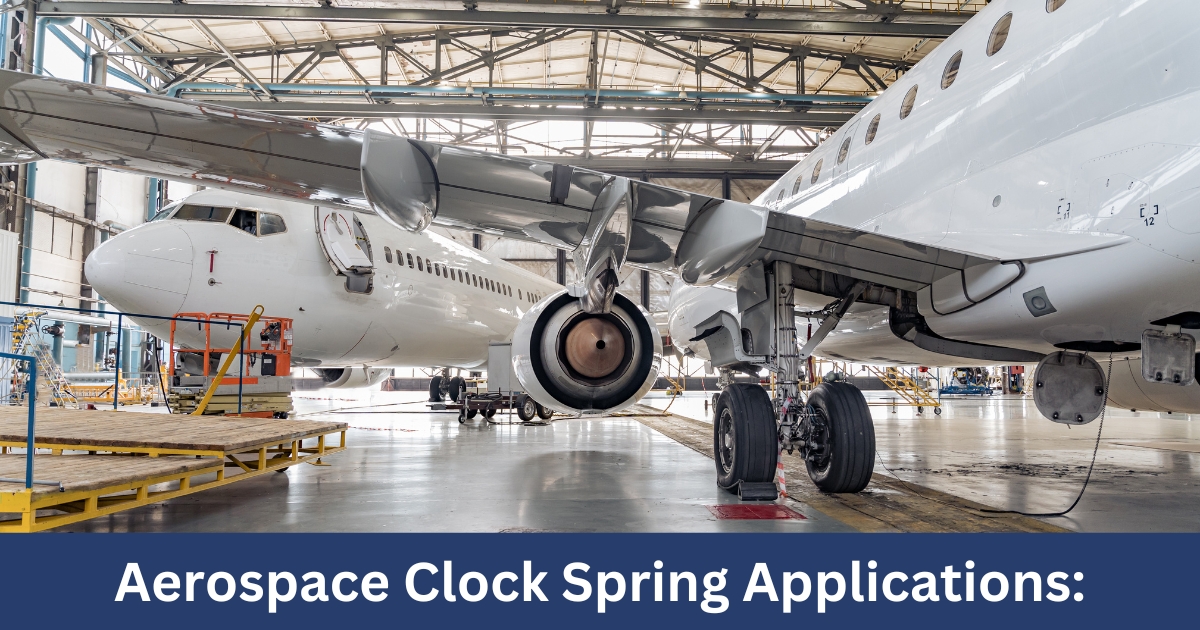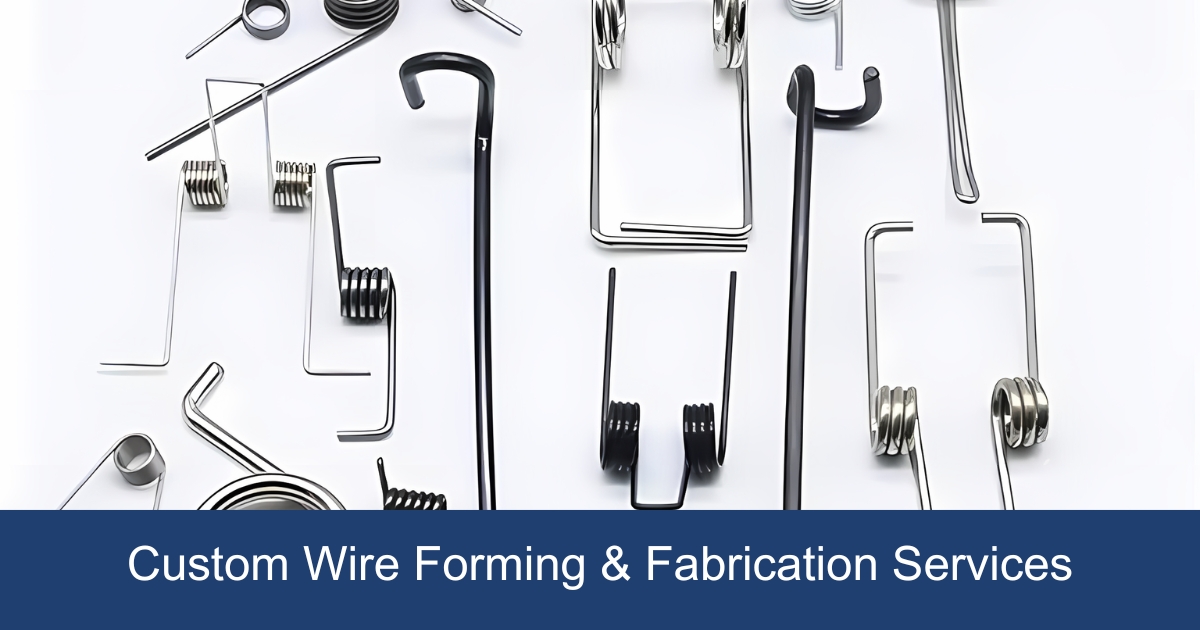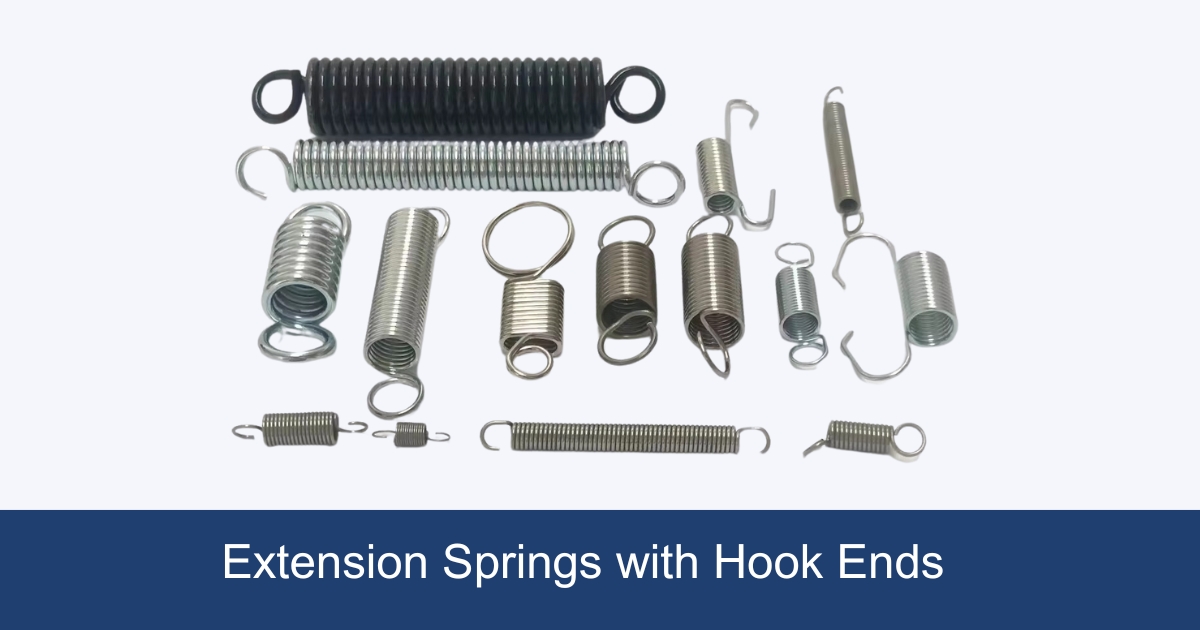The lifespan of a torsion spring is typically between 10,000 and 15,000 cycles. This translates to an average lifespan of approximately 5 to 7 years for residential applications, such as garage doors, assuming normal usage patterns. For a garage door that is opened and closed four times a day, this equates to roughly two cycles daily, leading to an expectancy of about 5 years before the springs may require replacement.
What Does a torsion Spring Do?
A torsion spring is a type of mechanical spring that works by torsion or twisting; that is, it exerts a force (torque) in a circular motion. When you twist a torsion spring, it stores mechanical energy, which it releases when it’s untwisted. This characteristic makes torsion springs highly versatile and suitable for applications where there is a need to apply torque or maintain pressure between two surfaces.
Here are some key functions and applications of torsion springs:
- Counterbalancing: Torsion springs are often used to counterbalance the weight of a door or lid, making it easier to open and close. This is commonly seen in garage doors, where the springs help lift the heavy door as it opens and control its descent as it closes.
- Returning to a Position: In applications like clothespins, clipboard clips, and hinges, torsion springs help return the mechanism to its original position after it has been opened or activated.
- Maintaining Pressure: They can apply pressure to push two objects apart or keep them together. This function is useful in applications such as electrical contacts, where a constant pressure is necessary for a reliable connection.
- Control Mechanisms: Torsion springs can also act as control mechanisms in devices like mechanical watches and clocks, where the controlled release of energy from the spring drives the movement.
- Torque Application: In automotive applications, torsion springs are used in torsion bars to provide suspension support. The spring absorbs some of the road shock, providing a smoother ride.
Understanding The Cycle Life of Torsion Spring
Understanding the cycle life of a torsion spring is crucial for ensuring the reliability and efficiency of the devices or mechanisms they are part of. The cycle life is determined by the number of complete cycles a spring can perform before it fails or its performance degrades to an unacceptable level. A cycle consists of the spring being twisted to its operational limit and then returned to its original position. This process puts stress on the material, and over time, can lead to fatigue, which eventually causes the spring to fail.
How Long Do Torsion Spring Last?
When discussing the lifespan of torsion springs, it’s important to provide clear and specific guidance based on industry standards and typical use cases. Here is an enhanced answer that elaborates on the lifespan of torsion springs with added clarity:
Torsion springs, integral components in many mechanical systems, are designed to endure a finite number of cycles before showing signs of wear or failure. Each cycle consists of one complete motion of winding and unwinding under load. The longevity of these springs is predominantly influenced by their design, material quality, operational environment and more.
Industry Standards and Lifespan Estimates: The industry standard life expectancy for torsion springs is typically between 10,000 and 15,000 cycles. This translates to an average lifespan of approximately 5 to 7 years for residential applications, such as garage doors, assuming normal usage patterns. For a garage door that is opened and closed four times a day, this equates to roughly two cycles daily, leading to an expectancy of about 5 years before the springs may require replacement.
5 Factors Influencing the Lifespan of a Torsion Spring
1、Material Quality
The material from which a torsion spring is made plays a pivotal role in its lifespan. Different materials respond differently under stress and environmental conditions, affecting the spring’s durability and functionality over time. Here are some key considerations regarding material quality:
- Type of Material: Common materials for torsion springs include stainless steel, high-carbon steel, and various alloys. Each material has distinct properties, such as tensile strength, corrosion resistance, and fatigue life, which directly impact the spring’s longevity.
- Material Grade: Within each material type, there are different grades with varying qualities. Higher grades of steel or specialized alloys may offer better performance in specific applications, albeit at a higher cost.
- Corrosion Resistance: Springs operating in corrosive environments require materials with inherent corrosion resistance or protective coatings to prevent rust and degradation.
- Fatigue Strength: The material’s ability to withstand repeated cycles of stress without failing is critical. Materials with high fatigue strength are preferred for torsion springs that experience frequent use.
Custom Torsion Spring Manufacturers must carefully select the appropriate material based on the intended application of the torsion spring. This decision impacts not only the spring’s cycle life but also its resistance to environmental factors and the type of load it can handle.
Enhancing Material Quality
To further improve the lifespan of torsion springs, custom torsion spring manufacturers can employ various treatments and processes:
- Heat Treatment: Heat treating the spring after forming can relieve internal stresses and improve its strength and elasticity.
- Surface Coating: Applying coatings, such as zinc plating or epoxy, can enhance corrosion resistance and reduce wear.
- Shot Peening: This process involves bombarding the surface of the spring with small pellets, creating a compressed layer that increases fatigue strength.
2、Design and Manufacturing Process
Design Optimization: The initial design phase is crucial for ensuring the longevity of a torsion spring. Parameters such as wire diameter, coil diameter, spring length, and the number of coils must be meticulously calculated to balance performance requirements with stress limits. Optimizing these design elements can significantly reduce the risk of premature failure due to stress concentration and material fatigue.
Material Selection: Coupled with design optimization, choosing the right material tailored to the spring’s operational environment enhances its life expectancy. Materials with higher fatigue strength and resilience under dynamic loads are preferred for applications requiring a high number of cycles.
Advanced Manufacturing Techniques: Employing state-of-the-art manufacturing techniques can also extend a spring’s life. Processes such as controlled shot peening enhance the surface finish and introduce beneficial compressive stresses, which improve fatigue resistance. Precise heat treatment procedures further refine the material’s mechanical properties, ensuring the spring can withstand operational stresses over time.
Quality Control: Rigorous quality control throughout the manufacturing process ensures that each spring meets strict standards. This includes inspecting for defects, ensuring dimensional accuracy, and verifying material properties. High-quality manufacturing practices minimize the likelihood of defects that could compromise the spring’s lifespan.
Customization: Custom torsion springs, designed and manufactured with specific applications in mind, often enjoy a longer lifespan. Tailored design and material choices can address unique challenges such as corrosive environments, extreme temperatures, or unusual load requirements, thus ensuring optimal performance and longevity.
3、Operational Environment
The operational environment significantly impacts the lifespan of torsion springs, influencing their durability and functionality over time. Manufacturers, particularly those specializing in custom torsion springs, must consider environmental factors when designing and producing these components. Here’s how the operational environment plays a crucial role:
Operational Environment Impact on Torsion Spring Lifespan
| Environmental Factor | Impact on Torsion Springs | Mitigation Strategies |
|---|---|---|
| Temperature Extremes | High temperatures can reduce the tensile strength of the spring material, leading to faster wear and failure. Conversely, extremely low temperatures can increase brittleness. | Select materials with a wide operating temperature range. Employ thermal treatments and coatings designed to protect against temperature extremes. |
| Corrosive Elements | Exposure to corrosive substances, such as chemicals or saltwater, accelerates material degradation, reducing spring life. | Use corrosion-resistant materials (e.g., stainless steel) or apply protective coatings. Custom torsion springs can be designed with specific coatings for enhanced resistance. |
| Humidity and Moisture | Prolonged exposure to high humidity or direct moisture can lead to rust and corrosion, weakening the spring. | Implement moisture-resistant coatings and consider using materials that inherently resist rust, such as certain alloys of stainless steel. |
| Vibrations and Shocks | Frequent vibrations or shock loads can cause material fatigue, leading to premature spring failure. | Design springs to distribute stress evenly and use materials known for their fatigue resistance. Custom designs can incorporate specific features to absorb or mitigate shock impacts. |
Understanding and mitigating the effects of the operational environment are essential for extending the lifespan of torsion springs. Custom torsion spring manufacturers possess the capability to tailor spring designs to withstand specific environmental challenges, ensuring optimal performance and longevity. Through careful material selection, protective treatments, and thoughtful design, the adverse effects of the operational environment can be significantly reduced, enhancing the durability of torsion springs in diverse applications.
4、Frequency and Type of Use Impact on Torsion Spring Lifespan
The frequency and type of use are paramount factors determining the lifespan of torsion springs, particularly when considering custom torsion springs designed for specific applications. Torsion spring manufacturers must closely evaluate these aspects to ensure the springs meet the longevity requirements of their intended use. The relationship between usage patterns and spring lifespan can be comprehensively understood through the following considerations:
| Usage Factor | Impact on Lifespan | Adaptation Strategies |
|---|---|---|
| Frequency of Use | Higher usage frequency increases the rate of wear and fatigue, potentially reducing the spring’s lifespan. | Custom torsion springs can be designed with reinforced materials or optimized coil geometries to withstand higher frequencies of use. |
| Load Characteristics | Springs subjected to varying loads or those operating near their maximum load capacity experience more stress, affecting their durability. | Employ advanced material selection and precision engineering to design springs that can accommodate specific load requirements without compromising longevity. |
| Operational Precision | Applications requiring high precision in movement or force application may place additional demands on the spring, influencing wear rates. | Customize spring design to ensure operational precision, including fine-tuning of spring dimensions and employing specialized manufacturing processes. |
| Dynamic vs. Static Loads | Dynamic loads (sudden or varying) can cause more stress and potential damage than static or consistent loads. | Design springs with dynamic loads in mind, possibly incorporating features such as variable pitch or dual-material construction to absorb shocks more effectively. |
5、Spring Coating and Surface Treatments
Spring coating and surface treatments are pivotal in extending the lifespan of torsion springs, safeguarding against environmental hazards and operational wear. Torsion spring manufacturers, especially those providing custom torsion springs, leverage these treatments to enhance durability and performance. Below is a detailed exploration of how coatings and surface treatments impact torsion spring longevity:
| Treatment Type | Subtypes | Benefits | Applications |
|---|---|---|---|
| Galvanization | – Hot-dip Galvanization <br> – Electro-galvanization | Offers robust protection against corrosion, significantly extending spring life in harsh environments. | Commonly used in automotive, construction, and outdoor applications susceptible to moisture and salt exposure. |
| Epoxy Coating | – Powder Epoxy Coating <br> – Liquid Epoxy Coating | Provides superior corrosion resistance and electrical insulation. | Ideal for electrical applications, harsh chemical environments, and where color coding is beneficial. |
| Passivation | – Nitric Acid Passivation <br> – Citric Acid Passivation | Enhances stainless steel’s corrosion resistance by promoting the formation of a passive oxide layer. | Widely used in medical devices, food processing equipment, and any application requiring high cleanliness standards. |
| Powder Coating | – Thermoset Powder Coating <br> – Thermoplastic Powder Coating | Adds a durable, corrosion-resistant layer; available in various colors for aesthetic appeal. | Suitable for consumer products, outdoor equipment, and applications requiring a durable finish. |
| Black Oxide | – Hot Black Oxide <br> – Cold Black Oxide | Provides mild corrosion resistance and reduces light reflection with minimal thickness increase. | Used in applications requiring a non-reflective surface and minimal dimensional change, such as tools and firearms. |
| Plating | – Chrome Plated <br> – Nickel Plated <br> – Zinc Plated | Offers corrosion resistance, wear resistance, and aesthetic appeal. | Utilized across a wide range of applications, including automotive, aerospace, and consumer electronics. |
7 Tips To Maximize Torsion Spring Cycle Life
- Lower Stress, The Better!: Designing torsion springs with a larger wire diameter or a lower final load can improve cycle life by allowing more room for the spring to operate without overstressing.
- Shot Peening: This process can greatly improve the performance and sustainability of a torsion spring, allowing it to handle more stressful conditions than unpeened torsion springs.
- Keep Cool: Torsion spring relaxation or loss in torsion spring load happens faster at high temperatures. Reducing operating temperatures can decrease the chances of torsion spring relaxation.
- Using The Right Material: The material selection is crucial for good torsion spring design. Upgrading to a higher tensile range or quality grade material can improve cycle life for specific applications.
- Minimize Shock Loading: Shock loading increases the risk of coil clash, wear, non-axial forces, and dynamic loading, which can decrease a torsion spring’s maximum potential.
- Reduce Resonance: Ensuring the operating frequency of the torsion spring is no more than one-thirteenth of the natural frequency can avoid harmonic issues, improving operational lifespan.
- Pre-Stressing: An additional manufacturing operation that allows the use of higher solid stresses in torsion springs by raising the elastic limit in torsion, improving a torsion spring’s fatigue life.
How to Estimating Cycle Life of a Torsion Spring
To estimate the cycle life of a torsion spring, the custom torsion spring manufacturers rely on both empirical data and theoretical calculations based on the material properties and torsion spring design. Real-world testing under controlled conditions is often conducted to validate these estimates. These tests simulate the operational stresses and conditions the torsion spring will face in its intended application.
Here’s a detailed guide on how to estimate and test the cycle life of a torsion spring:
Estimating Cycle Life
- Material Selection: Begin with selecting the appropriate material for the spring based on the required properties, such as tensile strength, corrosion resistance, and fatigue life. The material’s properties will significantly influence the theoretical cycle life of the spring.
- Spring Design Calculations: Utilize standard spring design equations to calculate the stresses within the spring during operation. Pay special attention to the maximum stress experienced by the spring during a cycle, as this is critical for determining fatigue life.
- Fatigue Life Models: Apply fatigue life estimation models specific to spring materials, such as the S-N curve (stress-life curve), to predict how many cycles the spring can withstand before failure. These models require inputs like the mean stress and the stress amplitude experienced during operation.
- Safety Factors: Incorporate safety factors into your calculations to account for uncertainties in material properties, operational conditions, and potential for manufacturing defects. This conservative approach helps ensure the spring’s reliability throughout its intended lifecycle.
How to Testing Cycle Life of a Torsion Spring
Practical Testing
- Prototype Manufacturing: Produce prototype springs based on the designed specifications and materials. Ensure that the manufacturing process reflects the intended production methods to accurately represent the final product’s characteristics.
- Cycle Testing Setup: Create a test setup that mimics the operational conditions of the spring as closely as possible. This includes the application of loads, the frequency of operation, and, if applicable, environmental conditions like temperature or corrosive elements.
- Data Collection: During testing, collect data on the spring’s performance, including any signs of wear, deformation, or failure. Monitor the number of cycles until failure or until the spring’s performance degrades to an unacceptable level.
- Analysis: Analyze the collected data to determine the actual cycle life of the spring under test conditions. Compare these results with the theoretical estimations to validate the design and calculations.
- Iterative Improvements: If the spring does not meet the expected cycle life, analyze the failure mode and adjust the design, material selection, or manufacturing process accordingly. Repeat the testing process to verify improvements.
Considerations for Accurate Estimation and Testing
- Consistency in Manufacturing: Ensure that the springs used in testing are representative of the batch production process to ensure consistency in the cycle life estimations.
- Real-World Conditions: Try to simulate real-world operational conditions as accurately as possible during testing, including dynamic loads, vibrations, and environmental factors.
- Statistical Analysis: Use statistical analysis of test data to predict the average cycle life and the variability one can expect in actual applications.




